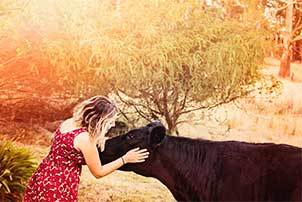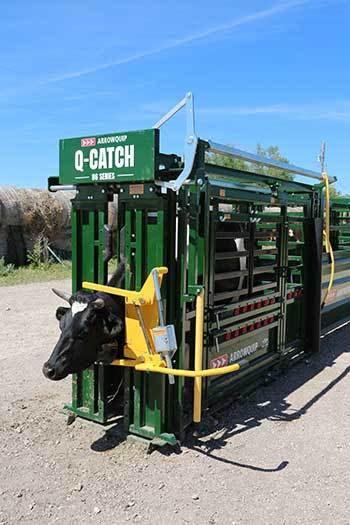Is Your Cow An Optimist Or A Pessimist? | Cow Behavior Research Proves Cows Have Personalities
Discover How Cows Think, Feel, and React – And Why Understanding Their Personalities Makes Handling Easier and Less Stressful.
Go Back to All BlogsPosted on: June 27, 2019
Updated on: December 26, 2025
Author: Liane Carter
SHARE:
Every good rancher knows that cows have different personalities and characteristics. Some are bold and strong, others timid and shy, while the rest must be somewhere in between. In a cattle behavior study conducted at the University of British Columbia, a number of cows were previously identified as fearful, sociable, optimistic, or negative and were then subjected to stressful situations. Research found that the fearful ones were more vocal and had higher eye temperatures, both of which are key indicators of stress.
Note: High eye temperatures are a result of increased blood flow into the eyes as the sympathetic nervous system is activated in threatening situations.

Cattle, just like humans, have personalities that are formed based on past experiences. They can remember both positive and negative encounters and associate objects or individuals with them. For example, cows that have directly experienced wolf attacks showed signs of stress when they saw wolves again. Additionally, those who were not directly affected but were merely witnesses to the attacks displayed similar physiological effects. This type of cattle behavior may be attributed to the fact that cattle can detect the scent of stress hormones, particularly in the urine of their peers.
Cattle are not born stubborn or chute-shy.
In a similar cattle behavior research on pain and pessimism, it was found that cows think negatively after a bad and painful experience, making them difficult to work with. This study proves that non-human species are also able to have cognitive bias in response to pain. Negative events can deeply affect the emotional state and judgment of cattle the same way humans get depressed after experiencing traumatizing situations.

Going through a cattle chute can be one of the most daunting experiences in a cow's life. Ranchers are always recommended to make sure that the animal's first time in a cattle chute is stress-free as this will determine their future personalities: if they are stubborn, difficult, shy, or easy to work with. Acclimating cattle so they get used to being handled could be considered time consuming at first but will make life much easier for the rancher in the long run. The practice of acclimating cattle can reduce stress, improve immune systems, and eventually save time for handlers.
Many years of research have proven that implementing low-stress cattle handling techniques are beneficial to both the cow and the rancher. When handlers prioritize animal welfare, profitability is increased. Working livestock in a calm environment greatly pays off as cattle are processed quicker and bruising is reduced. Avoiding cattle bruising is proven to be essential as bruised meat and dark cutters have lower beef quality and grade.
It is important to remind ourselves that cows can think, feel, and remember things like we do. Anyone who is experienced in working with cattle will say that putting ourselves in their hooves will help us understand their behavior. Furthermore, getting to know cows more as individuals than the same parts of a whole can prove to be essential for smooth cattle handling.
Sources:
Pain and pessimism: dairy calves exhibit negative judgement bias following hot-iron disbudding
Pessimism and fearfulness in dairy calves
Beef Quality Grades & Effects of Bruising
Thinking Cows: A review of cognition, emotion, and the social lives of dairy cows